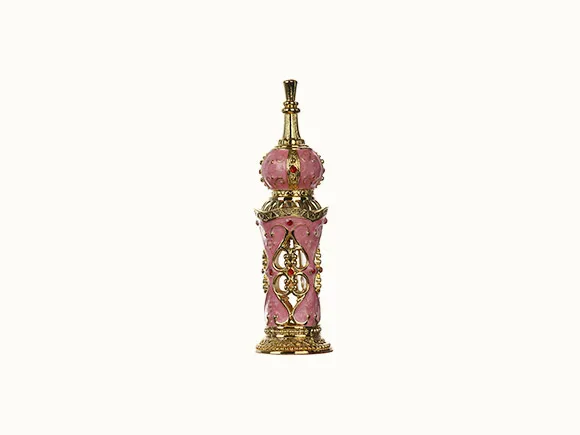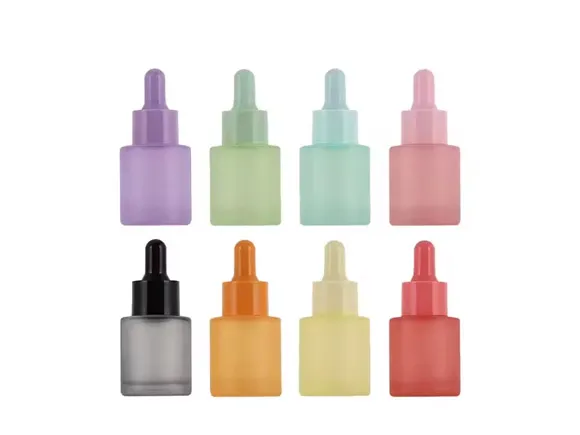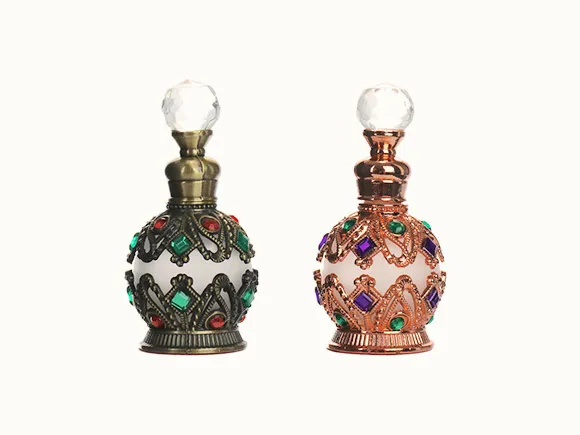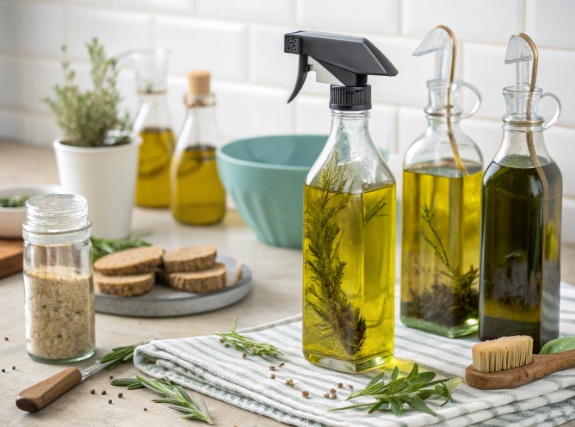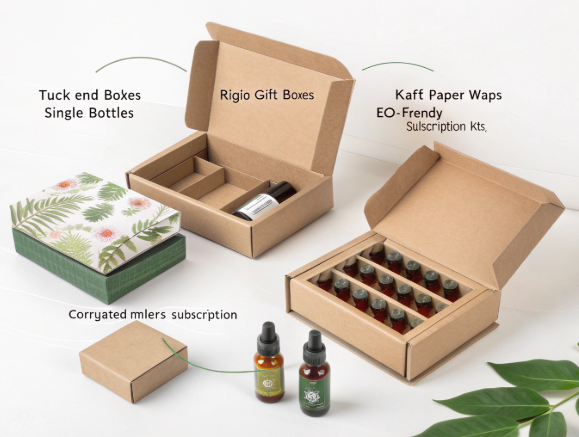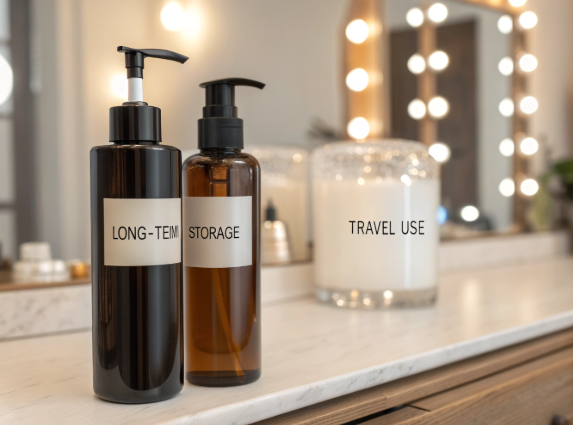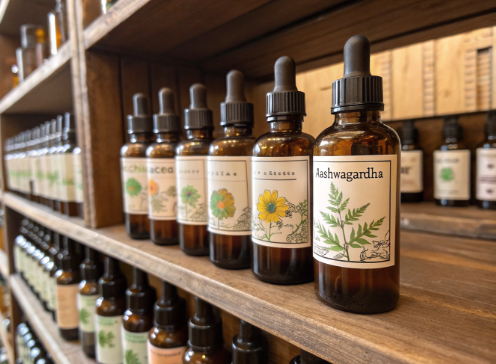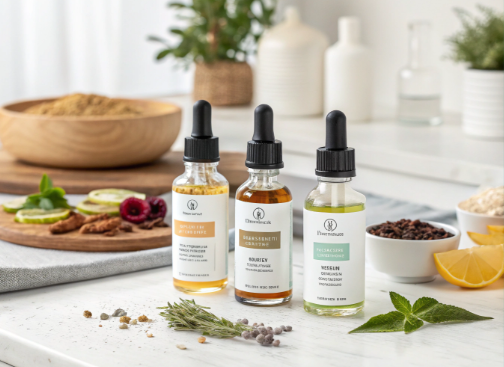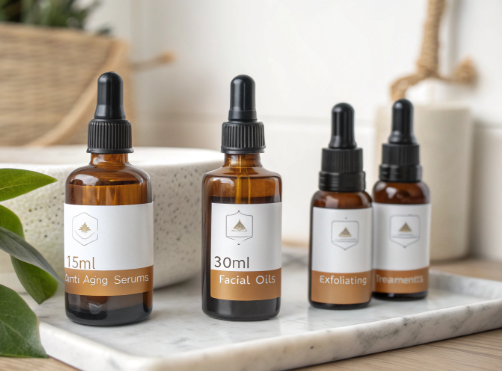Essential oil packaging needs to do more than protect—it should reflect your brand's promise.
Custom essential oil boxes are tailor-made packaging solutions designed to protect, organize, and present essential oil bottles while reinforcing branding, enhancing shelf appeal, and supporting eco-conscious values.
What is the best packaging for essential oils?
Packaging must preserve oil potency and appeal to customers.
The best packaging for essential oils includes UV-protected glass bottles with snug-fitting insert boxes made of rigid or corrugated cardboard, designed for both durability and presentation.
Packaging System Comparison:
| Component | Ideal Choice |
|---|---|
| Primary Bottle | Amber/Cobalt Glass, Dropper Top |
| Box Material | Rigid Paperboard or Corrugated Kraft |
| Insert Type | EVA Foam, Corrugated Grid, Paper Slot |
Adding branding to the outer box (via foil stamps or embossed logos) transforms packaging from basic to premium.
What is the 30/50/20 rule for essential oils?
Blending affects how you present oils as kits or individual products.
The 30/50/20 rule is a common blending ratio: 30% top notes, 50% middle notes, and 20% base notes to achieve aromatic balance.
Use in Packaging:
-
Structure boxed sets by note hierarchy (top/middle/base)
-
Include scent diagrams inside the lid
-
Print use cases per note family on external panels
Educating buyers on blend function via packaging drives engagement, trust, and cross-sell potential (e.g., “Morning Uplift,” “Sleep Support,” “Immune Guard”).
What containers are safe for essential oils?
Essential oils are chemically active. Choosing the wrong container risks product degradation.
Only glass containers (especially amber or cobalt) are universally safe for storing essential oils. Avoid PET, PVC, or reactive metal tins.
Safe Storage Guidelines:
| Container Type | Suitable for EO? | Notes |
|---|---|---|
| Amber Glass | ✅ Yes | Best for UV-sensitive oils |
| Clear PET | ❌ No | Can leach chemicals |
| Stainless Steel | ⚠️ Caution | May react with citrus oils |
Custom boxes should match bottle shape and neck height precisely to avoid shifting or breakage. Include foam padding or dividers for safety.
What is the highest grade of essential oils?
Not all oils are equal—and packaging should reflect their quality tier.
The highest grade of essential oils is often labeled “therapeutic grade,” “certified organic,” or “GC/MS tested,” although no global standard enforces this.
Packaging Indicators of Quality:
-
Print “Batch Tested,” “100% Pure,” or “No Additives” on box
-
Include QR code linking to third-party test results
-
Use tamper-evident closures and heavy card stock
Higher-grade oils warrant more premium packaging with luxury finishes like magnetic flaps, gold foil, and layered inserts.
What is the most ideal packaging material?
Eco meets function in the best materials.
The most ideal packaging materials for essential oils combine durability, print compatibility, and sustainability—typically rigid paperboard, recycled kraft, or bamboo composite.
Material Comparison:
| Material | Strength | Eco Score | Ideal For |
|---|---|---|---|
| Rigid Board | High | Medium | Premium gift sets |
| Kraft Paper | Medium | High | Natural/organic brands |
| Corrugated Card | Very High | Medium | Shipping-safe kits |
| Bamboo Composite | Medium | Very High | Luxury wellness boxes |
Use soy inks, uncoated surfaces, and removable liners to improve recyclability and minimize waste.
What to avoid when buying essential oils?
Bad packaging can signal bad product—even before the cap is opened.
Avoid essential oils sold in plastic bottles, unsealed units, vague labeling, or generic packaging that lacks traceability or brand information.
Packaging Red Flags:
-
No ingredient breakdown
-
No batch or expiry info
-
No brand or sourcing transparency
-
Loose bottles without box inserts
Smart packaging addresses these by including icons (cruelty-free, vegan, organic), region maps, or “from farm to bottle” stories inside the lid or on an included card.
Closing Thoughts
Custom essential oil boxes are more than containers—they’re canvases. The right box protects, educates, and elevates your brand story. Whether you're launching a new blend line or upgrading existing SKUs, premium custom boxes can boost credibility, reduce returns, and turn first-time buyers into lifelong fans.



